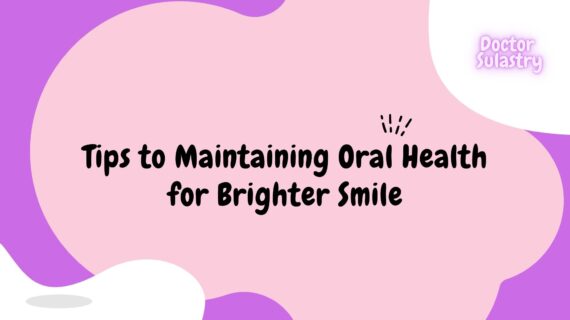Tips to Maintaining Oral Health – Not everyone can smile with a charming face. Moreover, for those of you who have a toothache. I want a big shy smile. Yellow teeth, cavities, or bad breath.
Surely you do not want to experience problems like that right? Therefore, be diligent to check your teeth and mouth. You can visit the nearest dentist or you can come to our clinic. There are several dental care packages that you can try. That way you will get satisfying results for beautiful teeth, beautiful smile, and even better to smile.
If your teeth are neat and attractive, there are a few more things you need to do. Because dental and oral health is very important and it is actually your own job to take care of it. But, do you know what are the ways to maintain healthy teeth and mouth? Here is several tips to maintaining your oral health for your brighter smile.
Also Read Impact of Careless Veneers Installation for Your Teeth
Tips to Maintaining Oral Health
If you want to take care of your teeth and mouth, at least you should pay attention to your dental health by applying some tips to take care of your oral health. You do not take this health problem lightly because it will greatly affect your confidence later.
1. Brush your teeth properly and correctly
This is the first of several tips for maintaining oral and dental health that you must do. It should be emphasized that you should not brush your teeth carelessly.
Brush your teeth the right way and at the right time. You can brush your teeth after breakfast and before going to bed at night, because this is called the best time to brush your teeth.
In addition to the right time, how to brush your teeth must also be correct. All front and back teeth should be brushed, including the inner teeth for maximum cleaning.
2. Clean your mouth area thoroughly
In addition to brushing your teeth properly, you also need to clean the mouth area completely and cleanly. One of them, by eradicating germs that cause bad breath and cavities. You can use mouthwash.
You can also get various recommendations for oral and dental health care needs at our clinic, of course. Take care of your oral hygiene as you would take care of your teeth.
3. You should reduce your consumption of coffee, cigarettes and alcohol
If you want to keep your teeth and mouth healthy, then these are some of the choices that must be reduced. Black coffee will leave a mark if you drink it too often. Likewise cigarettes, the nicotine will tend to easily damage your teeth and make your teeth look yellow. Then, hard alcohol will erode the tooth layer so that it is easily brittle and your teeth become damaged quickly.
Therefore, reduce the consumption of some of the things that have been mentioned earlier and you will see that your teeth will be well cared for.
4. Choose the right food to eat
In addition to reducing the consumption of cigarettes, alcohol and coffee, you should also pay attention to the food you eat. Bad breath and dental health often arise due to the food consumed. Red meat, eggs, or in Indonesia there’s some food called petai and jengkol which often leave an unpleasant odor and if you are not cleaned properly after eating. This does not mean that all of these foods should not be consumed.
But it would be better if these types of foods were reduced as well as when you want to reduce cigarettes or coffee. You could probably try for better food. Then you can start replacing it by eating more fresh fruits and vegetables, such as apples, oranges, tomatoes, and others.
5. You can use lemon for dental care
Did you know that lemon water that is consumed regularly has a good impact on the body and can reduce the smell of your breath.
In addition, if you want to brush your teeth mixed with lemon water and a little salt can also make your teeth whiter and fresher.
6. You should don’t wait for a toothache
Visiting the dentist regularly at least once every six months without waiting for your teeth to hurt is something you also need to do to maintain dental health.
In addition to prevention, routine maintenance will make you always get the most appropriate doctor’s advice to make your teeth beautiful and attractive.
Conclusion
Those were some tips to maintaining oral health that you can try. Maintaining dental and oral health is important. From now on, you should pay more attention to dental and oral health. But if you already have problems with your teeth, you can come to our place for consultation and receive treatment.
References




